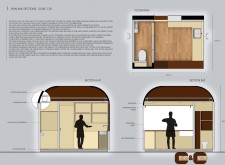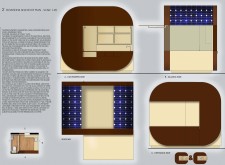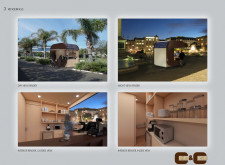5 key facts about this project
The kiosk embodies a practical approach to enhancing user interaction in urban areas. Its dimensions of 365 cm in length and 270 cm in width allow it to fit comfortably into various settings. The design centers on a sturdy framework that integrates essential functions, creating a space that prioritizes accessibility and efficiency.
Structural Design
The structure relies on three aluminum pillars, which provide support and serve as key visual elements. Glass walls are used to maintain a sense of openness, allowing people to see inside while also adding to the integrity of the design. This transparency fosters a welcoming atmosphere, encouraging passersby to engage with the space.
User-Centric Features
An important aspect of the design is the inclusion of a bathroom that supports the needs of users. Designed as a chemical toilet, it is suitable for areas without sewer connections. This facility features a collection tank situated below the kiosk, optimizing space and ensuring easy access through a sliding door.
Material Choices
The materials chosen for the kiosk contribute significantly to its functional and aesthetic appeal. The external walls are made from steel sheet painted in soft brown and cream colors, creating a neutral backdrop. The floating wood floor adds warmth to the interior, enhancing comfort and maintaining simple upkeep. Insulation is provided by glass wool within the panels, offering fire resistance and soundproofing to create a pleasant environment inside.
Sustainable Elements
Sustainability is a key consideration throughout the design. Photovoltaic panels are included to generate energy, supported by a generator for periods of low sunlight. The heating and cooling systems are designed for efficiency, featuring a radiant panel for even heat distribution and a system to maintain airflow without increasing humidity. Integrated waste management features include three separate containers below the counter, promoting responsible disposal habits.
A hatch at the front, designed with hydropneumatic pistons, allows for easy closure when the kiosk is not in operation. The combination of user-focused design and thoughtful material selection results in a space that meets contemporary needs without compromising on functionality.





















































